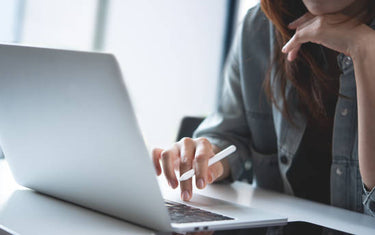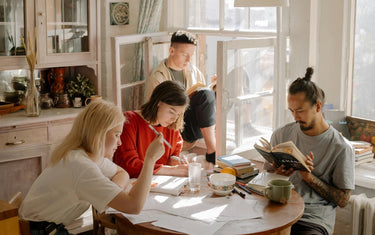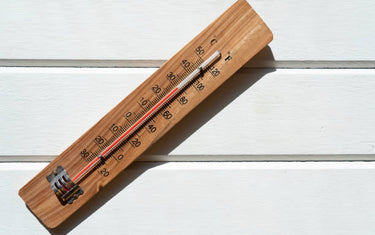5 min read / 8 February 2023 / Laura Garvin Gomez
How to Use Neem Oil for Plants
Get the most out of neem oil for your plants! This blog will guide you through the benefits and effective methods of using this natural pest control solution for a healthier garden.
Share this post

There are chemicals in a lot of the products we use daily, and there is a growing movement of people who are looking for kinder, safer and less toxic alternatives.
This relates to all aspects of our lives, from cleaning solutions to garden products, and essential oils are becoming the go-to option for many.
When it comes to gardening products, there are two elements to consider: yourself and the plant. Chemical-based products can cause allergic reactions in humans and also harm plants, so if you are trying to keep pests away, using something like neem oil could be just what you need. We explain more about neem oil below, its benefits to plants and how to use it safely.
What is neem oil?Neem oil is a natural oil that has been extracted from the seed of the neem tree, which is mostly found in India. The active ingredient is azadirachtin, a compound that can work well as a natural pesticide for your garden, offering an alternative to harsh chemical-based products. You can use neem oil for all types of things to do with plants, be it for indoor houseplants or outdoors as a fungicide, insecticide and miticide. |
Why use neem oil on plants?
Thanks to its active ingredient of azadirachtin, neem oil can keep your plant clear of small and large pests on your plant. The chemical serves to disrupt the insect’s bodily functions causing them to become inactive. Neem oil is effective at every stage of a pest’s life cycle, it can kill off eggs, larvae, pupae and adults.
This is great news for your plants as they will respond well to a non-toxic solution and do not have to contend with the concoction of harsh chemicals used in commercial products. Your plant won’t be harmed by neem oil, and offers a good protective barrier against pests and insects.

What is the best neem oil to use for plants?
Whether you are using a neem oil spray for plants or wiping them down, we would recommend using this unrefined cold pressed pure neem oil. As we describe through this blog, it can work well as a natural insect repellent to extend the lifespan of your plants and greenery.
Some people also use neem oil to prevent fleas, ticks and mites on dogs and horses. Neem oil offers health benefits for humans too thanks to its moisturising properties, making it ideal for dry and sensitive skin. Spray neem oil on your clothes to repel insects in hot countries and use it to treat head lice too, if needed.
How to mix neem oil for plants
Making your own neem oil mixture for your plants and garden is easy.
- Fill up a spray bottle with warm water.
- Add 0.5 teaspoon, a few drops of neem oil and 3-4 drops washing up liquid.
- Replace the lid on the spray bottle and shake well to combine the mixture.
- Once you have shaken the bottle the mixture is then ready to use on your plants. Be sure to shake the bottle every time you use oil, as the oil will naturally start to settle on top of the water whilst not in use.
- Always try to use warm water in your mixture, as oil is thicker than water and struggles to mix well with colder temperatures.
- The best time of day to use neem oil is early morning or in the evening, as if left exposed to direct sunlight during the day it could burn the plants due to the strength of the oil.
Is neem oil suitable for all types of plants?
You can use neem oil on any type of plant without it having a detrimental effect, giving you a reliable way to protect your greenery. However, it is more suited to plants with smooth surfaces, as the oil is more difficult for pests to escape compared to plants with needles, furs and fuzzy leaves.

How do I use neem oil on plants?
Using the mixture above there are few ways you can use neem oil on your plants, for example:
- Mix it in a spray bottle to mist your plants and flowers: This is a simple and easy way to use neem oil on your plants to ward off pests. The only issue to be wary of is that it isn't a precise method, so you can miss some spots, which is fine for small numbers of pests, but less so for aggressive types. Wiping the plant may be a better option if you have a larger pest problem developing.
- Wipe off your plants using an oil, water and soap mixture in a bowl: Wiping your plants gives you more accuracy and assurance that you won’t be missing any parts of the plant with the oil. To do this, use the oil and soap mixture we described above with a cotton ball. This is a more time-consuming process, especially if it is a large plant with a lot of leaves, but you should have more peace of mind.
- Remove pests from your plants using a Q-tip dipped in the neem oil mixture: Using a Q-tip is a good idea if you are trying to remove spider mites from your plant. You can use the Q-tip to mark the spot where the pest has previously been so they won’t be able to return to it. The Q-tip will also kill any pests when it comes into contact with them.

Using neem oil on plants is a process that will take a little time to work, so don’t expect instant results. The key to success is repeating your actions so your plants are cleaned and sprayed for a few days at a time. You can use neem oil on plants that don’t have any pest problems, with a once weekly spray being just about the right amount. It’s a great way to protect your plant and to help to retain its good looks over time, allowing it to flourish and offer its benefits to your household.










